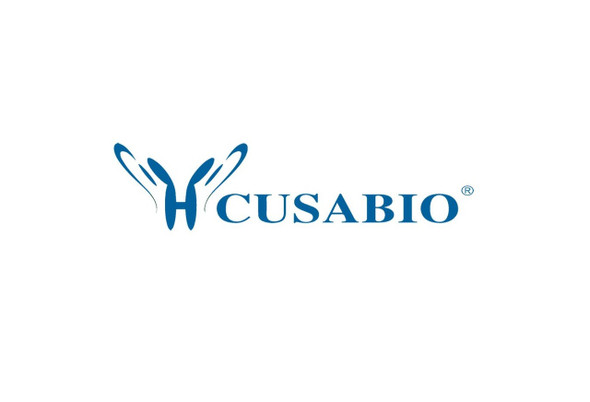Cusabio Human Recombinants
Recombinant Human Fatty acid-binding protein 5 (FABP5) | CSB-EP007946HU
- SKU:
- CSB-EP007946HU
- Availability:
- 3 - 7 Working Days
Description
Recombinant Human Fatty acid-binding protein 5 (FABP5) | CSB-EP007946HU | Cusabio
Alternative Name(s): Epidermal-type fatty acid-binding protein1 Publication E-FABP1 Publication Fatty acid-binding protein, epidermal Psoriasis-associated fatty acid-binding protein homolog
Gene Names: FABP5
Research Areas: Cardiovascular
Organism: Homo sapiens (Human)
AA Sequence: MATVQQLEGRWRLVDSKGFDEYMKELGVGIALRKMGAMAKPDCIITCDGKNLTIKTESTLKTTQFSCTLGEKFEETTADGRKTQTVCNFTDGALVQHQEWDGKESTITRKLKDGKLVVECVMNNVTCTRIYEKVE
Source: E.coli
Tag Info: N-terminal 10xHis-tagged
Expression Region: 1-135aa
Sequence Info: Full Length
MW: 21.2 kDa
Purity: Greater than 90% as determined by SDS-PAGE.
Relevance: Intracellular carrier for long-chain fatty acids and related active lipids, such as the endocannabinoid, that regulates the metabolism and actions of the ligands they bind. In addition to the cytosolic transport, selectively delivers specific fatty acids from the cytosol to the nucleus, wherein they activate nuclear receptors (PubMed:22170058, PubMed:21395585). Delivers retinoic acid to the nuclear receptor peroxisome proliferator-activated receptor delta; which promotes proliferation and survival. May also serve as a synaptic carrier of endocannabinoid at central synapses and thus controls retrograde endocannabinoid signaling. Modulates inflammation by regulating PTGES induction via NF-kappa-B activation, and prostaglandin E2 (PGE2) biosynthesis during inflammation (By similarity). May be involved in keratinocyte differentiation (PubMed:8092987).
Reference: "Solution structure and backbone dynamics of human epidermal-type fatty acid-binding protein (E-FABP)." Gutierrez-Gonzalez L.H., Ludwig C., Hohoff C., Rademacher M., Hanhoff T., Rueterjans H., Spener F., Luecke C. Biochem. J. 364:725-737(2002)
Storage: The shelf life is related to many factors, storage state, buffer ingredients, storage temperature and the stability of the protein itself. Generally, the shelf life of liquid form is 6 months at -20?/-80?. The shelf life of lyophilized form is 12 months at -20?/-80?.
Notes: Repeated freezing and thawing is not recommended. Store working aliquots at 4? for up to one week.
Function:
Involvement in disease:
Subcellular Location:
Protein Families:
Tissue Specificity:
Paythway:
Form: Liquid or Lyophilized powder
Buffer: If the delivery form is liquid, the default storage buffer is Tris/PBS-based buffer, 5%-50% glycerol. If the delivery form is lyophilized powder, the buffer before lyophilization is Tris/PBS-based buffer, 6% Trehalose, pH 8.0.
Reconstitution: We recommend that this vial be briefly centrifuged prior to opening to bring the contents to the bottom. Please reconstitute protein in deionized sterile water to a concentration of 0.1-1.0 mg/mL.We recommend to add 5-50% of glycerol (final concentration) and aliquot for long-term storage at -20?/-80?. Our default final concentration of glycerol is 50%. Customers could use it as reference.
Uniprot ID: Q01469
HGNC Database Link: N/A
UniGene Database Link: N/A
KEGG Database Link: N/A
STRING Database Link: N/A
OMIM Database Link: N/A









